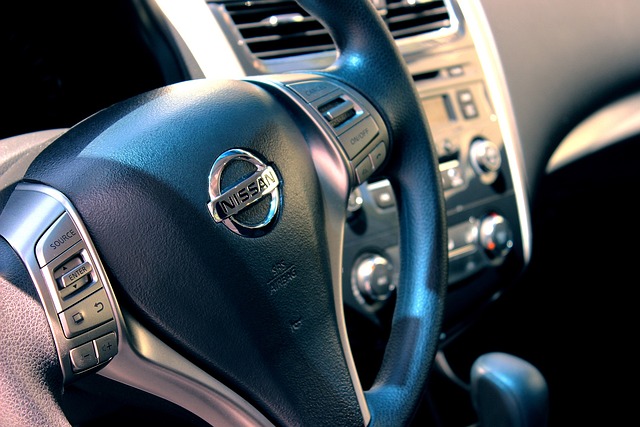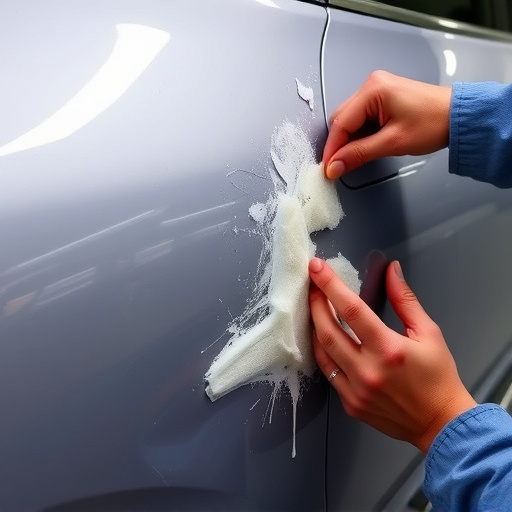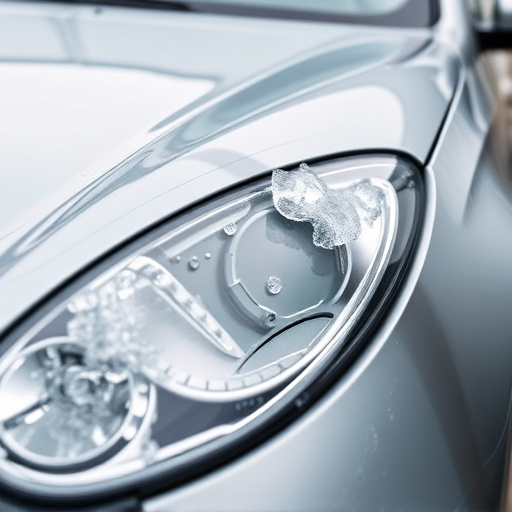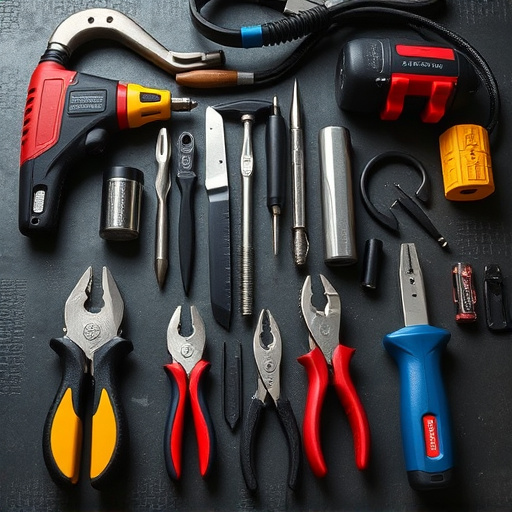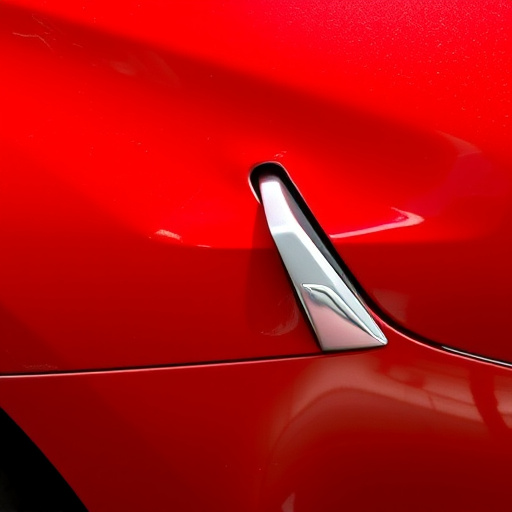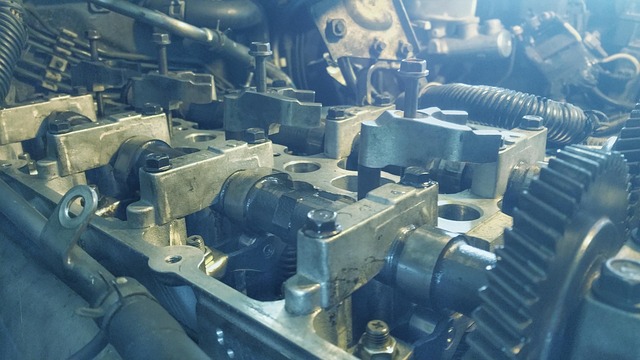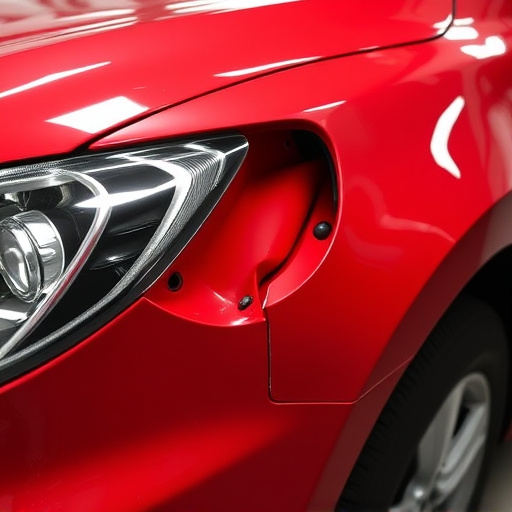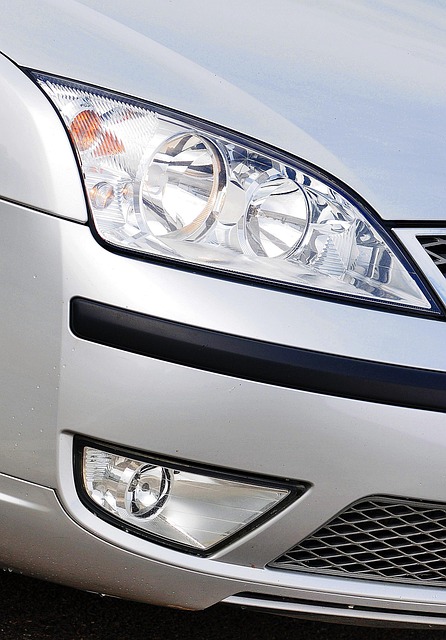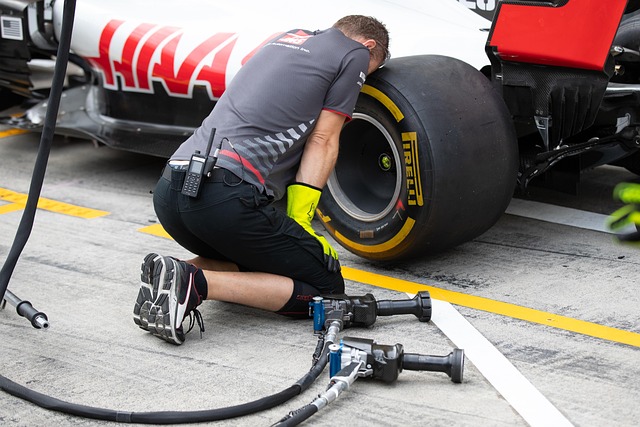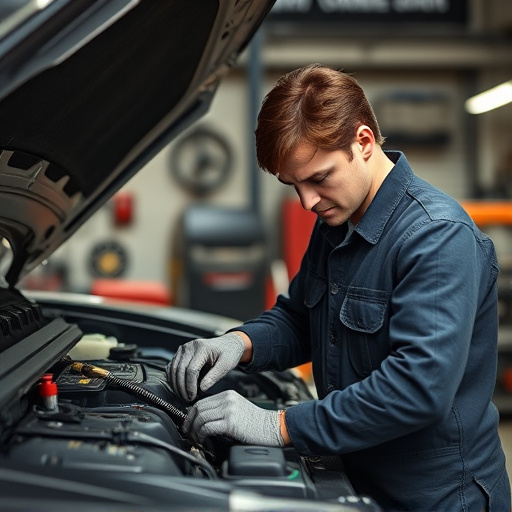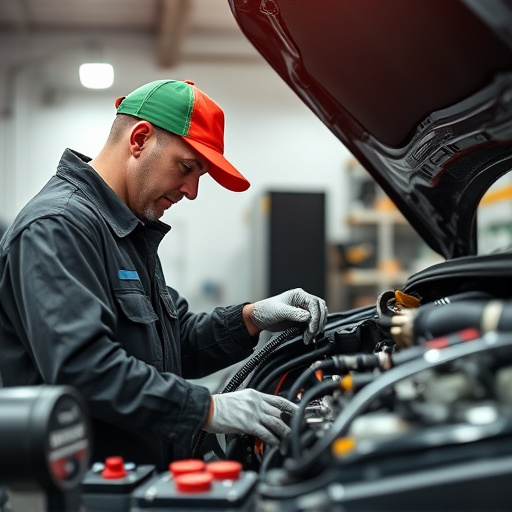Weather stripping is a crucial, often neglected, car maintenance step. It guards against water damage, improves energy efficiency, and prevents rust. Regularly inspect for wear, cracks, or discoloration, replacing damaged strips promptly to protect your vehicle's interior and structural integrity. Professional services offer restoration for severe cases, ensuring long-term vehicle health and value through proper weather stripping replacement.
Weather stripping replacement is an often overlooked yet critical aspect of vehicle maintenance. These flexible seals play a vital role in protecting your car from the elements, ensuring optimal interior comfort and preserving its value. This article delves into the essential functions of weather stripping, highlighting the numerous benefits of regular replacement. We’ll guide you through identifying wear and damage, empowering you to maintain your vehicle effectively.
- Understanding Weather Stripping and Its Functions
- Benefits of Regular Replacement for Vehicles
- Identifying Wear and Damage: A Step-by-Step Guide
Understanding Weather Stripping and Its Functions

Weather stripping, a vital component often overlooked, plays a crucial role in vehicle maintenance and overall functionality. It’s more than just a decorative trim; this essential material forms a protective barrier between your car’s exterior and the elements. By sealing gaps around doors, windows, and other openings, weather stripping prevents water, dirt, and extreme temperatures from penetrating the vehicle’s interior. This simple yet effective mechanism contributes to enhanced vehicle longevity and optimal passenger comfort.
Regular wear and tear, along with environmental factors, can degrade weather stripping over time. Cracks, tears, or loss of flexibility are signs that replacement is necessary. Ignoring these issues might lead to water damage, poor sealing, and even structural problems in automotive collision repair or automotive body work scenarios. Therefore, proactive maintenance through timely weather stripping replacement is key to ensuring a vehicle’s continued performance and preserving its value, especially during the process of vehicle restoration.
Benefits of Regular Replacement for Vehicles

Regular weather stripping replacement is an often-overlooked aspect of vehicle maintenance that offers numerous benefits for car owners. This simple yet crucial task plays a significant role in keeping your vehicle in top condition, not just aesthetically but also from a functional perspective. One of the primary advantages is its impact on energy efficiency. Over time, worn-out weather stripping can lead to drafts and air leaks around doors and windows, resulting in increased fuel consumption as the A/C or heater works harder to maintain an optimal interior temperature. By replacing it promptly, you can ensure your vehicle’s thermal insulation remains effective, saving you money on gas expenses.
Moreover, timely replacement is essential for preventing damage caused by elements like water and moisture. Weather stripping acts as a barrier, protecting the car’s body from direct exposure to rain, snow, and other weather conditions. If left intact, damaged weather stripping can invite water into the vehicle, leading to potential rusting, corrosion, and even internal damage, which might require more costly repairs such as car dent removal or extensive autobody repairs. Regular maintenance in this area ensures your vehicle remains reliable and safe for many years to come.
Identifying Wear and Damage: A Step-by-Step Guide

Identifying wear and damage on a vehicle is an essential step in determining when weather stripping replacement is necessary. Start by visually inspecting the car’s exterior, focusing on areas where rubber meets metal, such as door sills, fenders, and window frames. Look for cracks, tears, or discoloration, which could indicate that the weather stripping has become brittle or separated from the surface.
Next, use your fingers or a thin tool to gently press along the edges of the existing weather stripping. If it feels stiff or gives way easily, this suggests it’s lost its flexibility and needs replacing. Additionally, pay attention to any water spots or stains on the car’s body, as these could signal that moisture has infiltrated through damaged weather stripping during inclement weather, leading to potential rust or corrosion over time. For fleets or in cases of severe damage, engaging professional fleet repair services can ensure thorough vehicle restoration, including efficient car dent removal and timely weather stripping replacement.
Regular weather stripping replacement is an essential part of vehicle maintenance, offering numerous benefits such as improved fuel efficiency, enhanced exterior protection, and increased resale value. By understanding the functions of weather stripping and identifying wear and damage through simple step-by-step guides, car owners can keep their vehicles in optimal condition. This proactive approach ensures a smoother driving experience and extends the lifespan of your vehicle’s key components, making weather stripping replacement a valuable investment.

